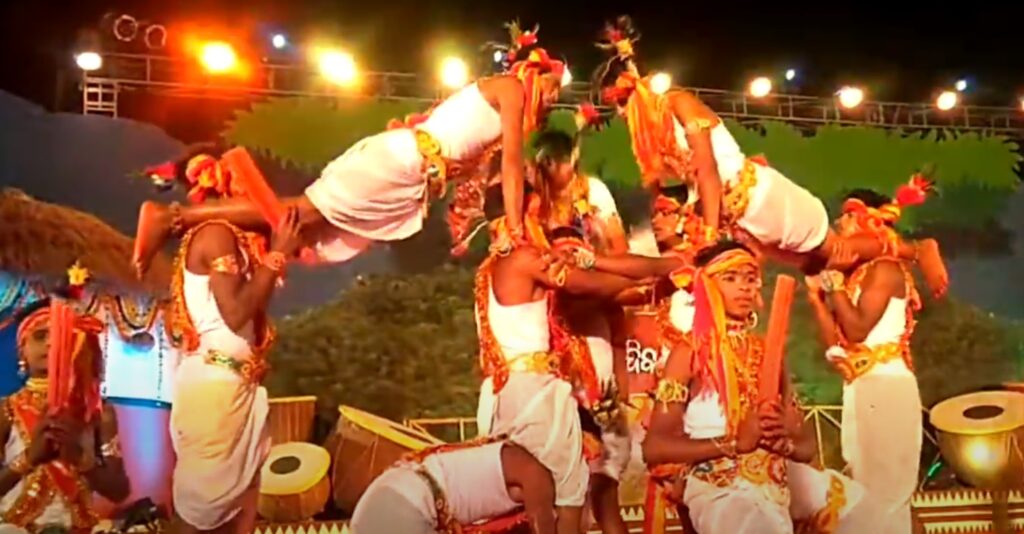The Kathi folk dance is performed by people of West Bengal. Earlier the dance engendered the earnest feeling of Bengal culture. However, it has become a mere source of entertainment and joy. The regional sect in West Bengal celebrates it for the amusement of the audiences and performing artists. The dance is performed on the enriched cultural songs that are composed on the occupations of the native villagers.

Kathi Dance Costumes
There are several types of costumes that a Kathi performer wears. However, the usual one is a combination of shirts made from the Leopard skin and the cotton dhotis. Nowadays, dhotis and shirts are both made from cotton. They also wear Anklets to ornament their ankles. Besides, these anklets also produce rhythmic sounds that complement this beautiful yet robust dance form.
Performance & Implications
The Kathi folk dance is usually performed by a group of men. The Kathi performers energetically dance on the rhythmic steps in sync with the whole group. These artists hold the wooden sticks in their hands, beating them in harmony with the songs. These sticks form a significant component of the dance, providing balance and a sense of swiftness. The tone of the cultural songs is repetitive, likewise, the dance steps are also recurring. During the performance, an artist does several postures, like touching the head on the ground and moving the body, forming a near-perfect circle with the path of the legs.
Some movements of this folk dance directly allude towards the war showing vigor and strength. They frequently shout in between the performance as done during the battle to boost the morale. The posture during the entire performance is strictly firm comparable to the battle warrior. At times, they beautifully revolve in two concentric circles, both circles moving in opposite directions.
Another compelling section of this dance is when an individual dancer steps out and places himself at the center of the circle formed by the group. Then he passionately starts revolving at one place while skillfully stroking the sticks and thwacking the feet on the ground. This part of the Kathi folk dance portrays the situation in war, where the person at the center plays the victim, and his sticks are the weapon. He shows all the energy and vigor that he would have in the war as a warrior.
The Kathi dance has gained popularity in the last decade and is a delight to watch.
